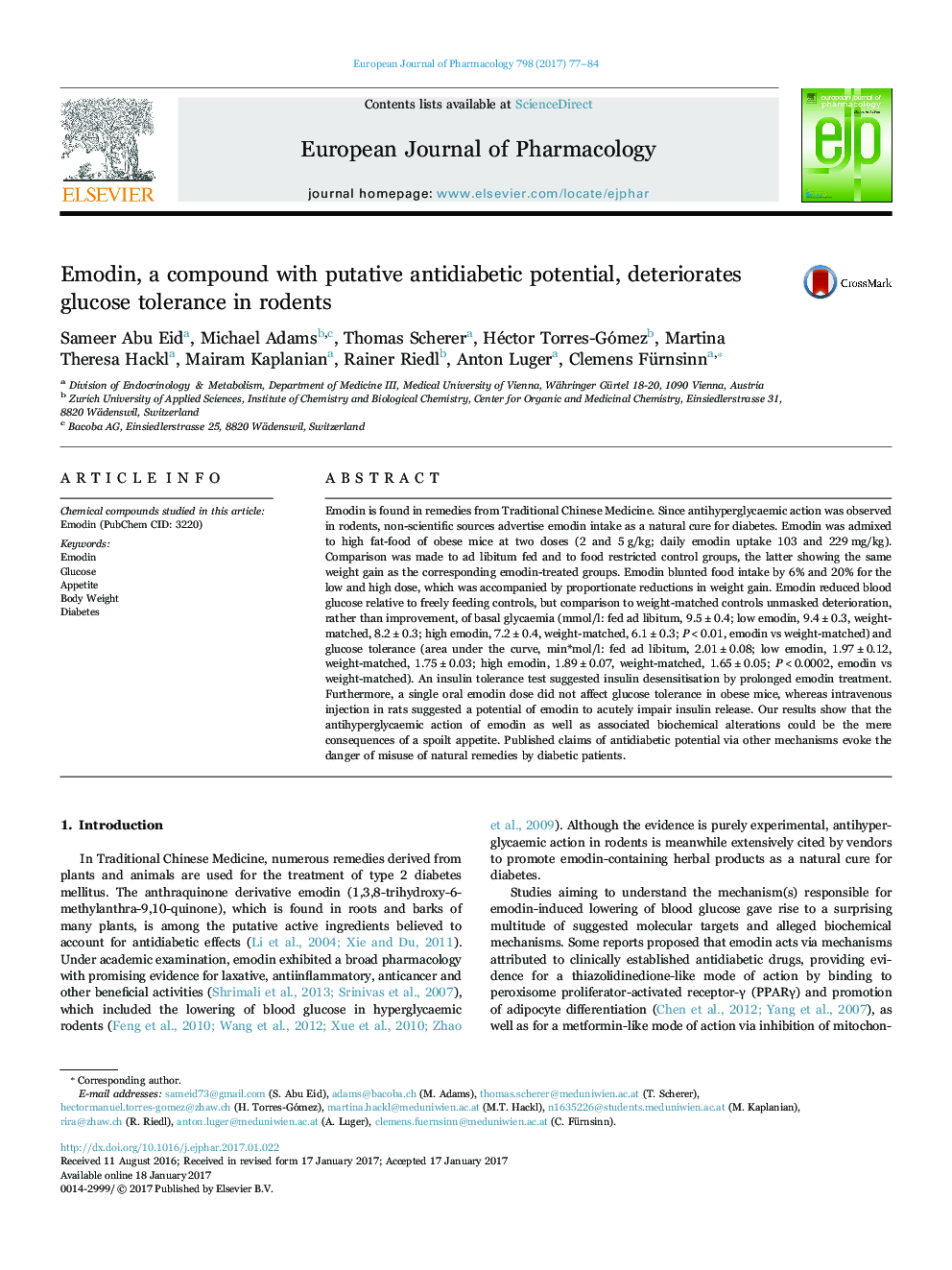| Article ID | Journal | Published Year | Pages | File Type |
|---|---|---|---|---|
| 5554798 | European Journal of Pharmacology | 2017 | 8 Pages |
Emodin is found in remedies from Traditional Chinese Medicine. Since antihyperglycaemic action was observed in rodents, non-scientific sources advertise emodin intake as a natural cure for diabetes. Emodin was admixed to high fat-food of obese mice at two doses (2 and 5 g/kg; daily emodin uptake 103 and 229 mg/kg). Comparison was made to ad libitum fed and to food restricted control groups, the latter showing the same weight gain as the corresponding emodin-treated groups. Emodin blunted food intake by 6% and 20% for the low and high dose, which was accompanied by proportionate reductions in weight gain. Emodin reduced blood glucose relative to freely feeding controls, but comparison to weight-matched controls unmasked deterioration, rather than improvement, of basal glycaemia (mmol/l: fed ad libitum, 9.5±0.4; low emodin, 9.4±0.3, weight-matched, 8.2±0.3; high emodin, 7.2±0.4, weight-matched, 6.1±0.3; P<0.01, emodin vs weight-matched) and glucose tolerance (area under the curve, min*mol/l: fed ad libitum, 2.01±0.08; low emodin, 1.97±0.12, weight-matched, 1.75±0.03; high emodin, 1.89±0.07, weight-matched, 1.65±0.05; P<0.0002, emodin vs weight-matched). An insulin tolerance test suggested insulin desensitisation by prolonged emodin treatment. Furthermore, a single oral emodin dose did not affect glucose tolerance in obese mice, whereas intravenous injection in rats suggested a potential of emodin to acutely impair insulin release. Our results show that the antihyperglycaemic action of emodin as well as associated biochemical alterations could be the mere consequences of a spoilt appetite. Published claims of antidiabetic potential via other mechanisms evoke the danger of misuse of natural remedies by diabetic patients.
